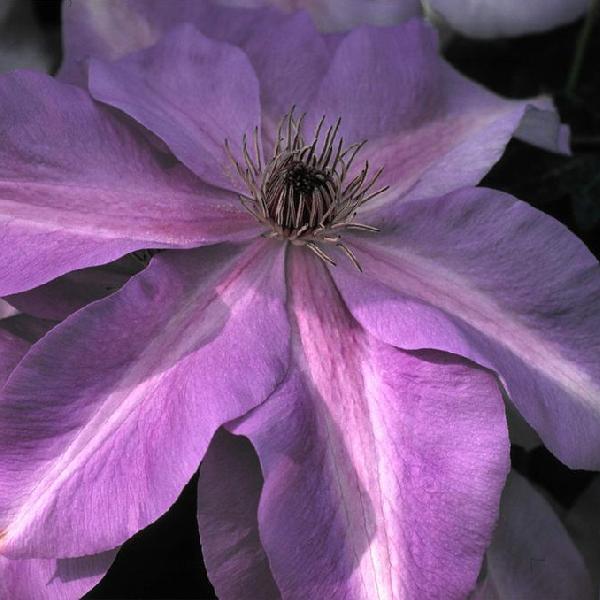Site Requirements: Most clematis will grow in full sun (more than 6 hours) but prefer some afternoon shade. There are clematis, in addition, that tolerate or prefer part to full shade. They must have cool, moist roots. (Clematis paniculata, sweet autumn clematis, is the exception and does not require cool roots.) To achieve this we recommend at least 3” of stone or non-acidic mulch such as buckwheat hulls or cocoa shells around the base of the plant. It is also possible to plant groundcover annuals or perennials at the base or to plant the clematis so that it will grow through shrubs, including roses, or sturdy perennials.
Planting Instructions: Clematis like fertile, well drained soil. For backfill, mix 2/3 of the soil taken from the hole with 1/3 compost. We also recommend adding a handful of superphosphate (0-20-0) and 2 tablespoons of lime in the planting hole. They should be planted 2 or more feet apart. Plant the crown (the base of the plant at the soil level in the pot) 2-4” below the surface.
Care Guidelines: Clematis like moist, neutral to sweet soil. This usually translates to approximately 3 gallons of water once a week OR 1” of rainfall a week. Every spring, when the forsythia are in bloom, top dress the soil around the base of the vine with compost or well rotted cow manure and 1-2 tablespoons of lime. You may feed your plant with a water soluble fertilizer every other week during the growing season. If you follow these guidelines, you should have a very well established clematis in about three years.
Pruning Clematis: Bloom time determines when and how much to prune your vine. Clematis are assigned pruning groups: I, II, and III.
Group I: spring bloomers that flower on the previous year’s growth. Prune after flowering, usually no later than the end of June, so that new growth has time to set buds for next year’s flowers. Pruning is necessary only to neaten or contain growth.
Group II: late spring and September bloomers that flower on both the previous year’s and new growth. Prune in early spring only to remove dead and weak stems. (Hard pruning of a portion of old wood in early spring before flowering will encourage more flowering in September. Hard pruning of a portion of old wood after flowering will encourage more flowering the following spring.)
Group III: summer bloomers that flower mid June through September on new growth. There is no need to keep the old growth, so cut back to 12-18” tall in early spring (at the same time you top dress the soil with compost).
Clematis Wilt: Be careful transplanting new clematis. These fragile vines may be easily damaged or stressed which makes them susceptible to a disease called Clematis Wilt. It is not life threatening. The disease starts at the tips and can affect all leaves and stems, but it does not affect the root system. Cut off and destroy all the affected stems. The plant will likely come back from the roots, although it may not show any growth until the next year.
Treatment with a fungicide may be appropriate.
All clematis are deer resistant. All are adaptable to coastal gardens.






